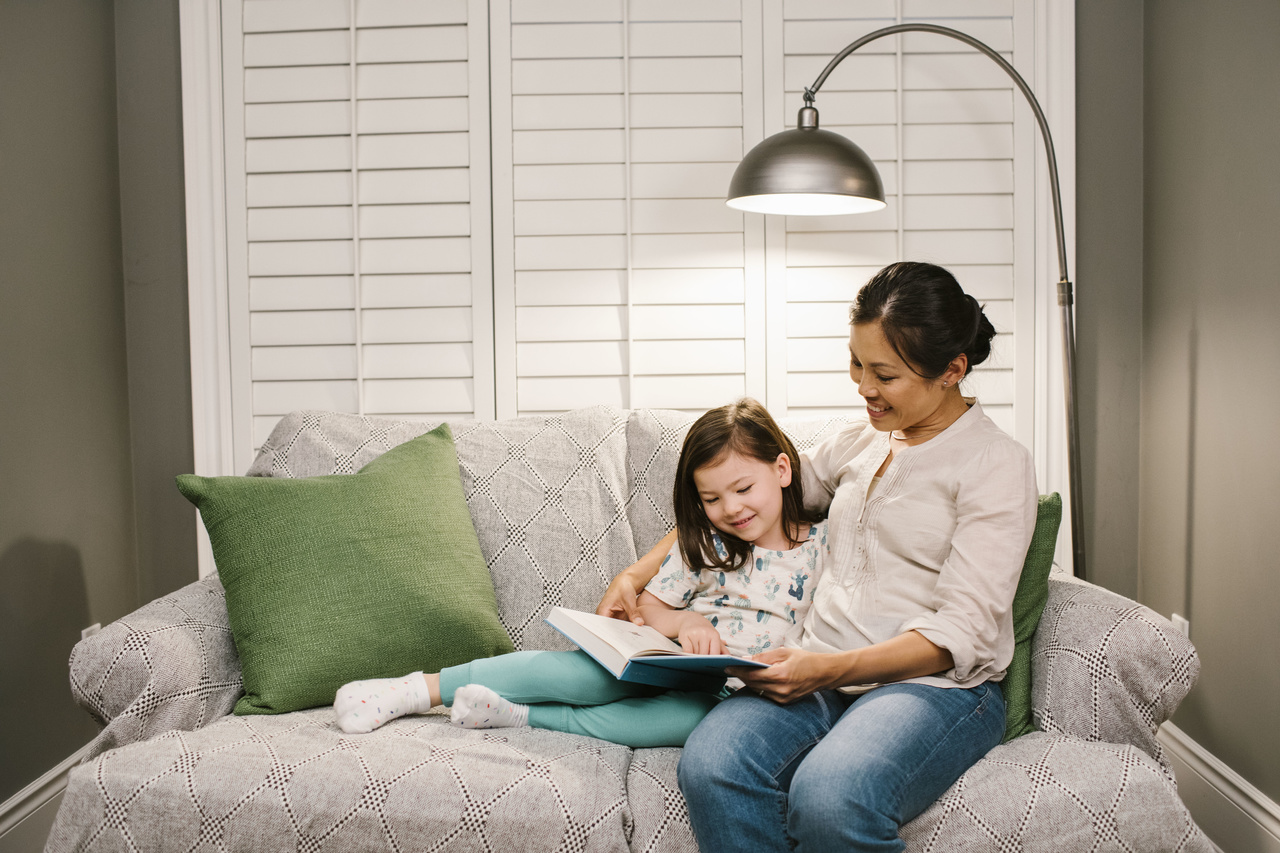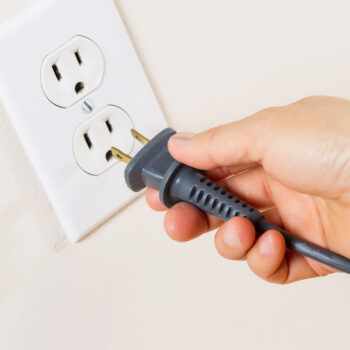
30 ways to save energy and manage your use
If you’re looking for ways to save energy, here are some tips that you may consider in your home:
- Set your ceiling fan for each season. Did you know that ceiling fans have a switch located on the side of the fan base that lets you change the direction of the fan blades? A ceiling fan can help distribute air from your air conditioning in the summer or heat in the winter. During the summer months, your ceiling fan blades should be set to spin counter clockwise. The angle of the fan blades should be set to a minimum of 12 degrees for maximum cooling. This will push the air down and create a cool breeze. A ceiling fan in the winter may seem counter intuitive, however, it could save you as much as 15 per cent on your heating bills. During the winter months, your ceiling fan should be spinning clockwise at a low speed, since warm air naturally rises.
- Clear your house of phantom power. Check around your house to see what items are plugged in. Laptops, cell phones, countertop appliances, game consoles, and hair appliances are examples of items that still draw energy when they are plugged in but not turned on. Unplugging items will help reduce phantom power and save on energy costs!
- Dry your laundry outside. Dryers tend to use a lot of energy. If you have the space, a drying rack can be a useful alternative to dry your clothes out of a wash and will certainly help you save energy and costs!
- Replace your HVAC filter. It is important to do regular maintenance on your HVAC system, including replacing its filter every few months. A clean filter will help keep your system running efficiently.
- Clean the lint trap in your dryer. Lint in dryer’s lint trap can be a serious safety hazard, and on top of that, can cause a dryer to run inefficiently. By cleaning your lint trap, your dryer will run more smoothly and efficiently and will help save costs.
- Vacuum dust-prone areas. Not only is dusting helpful for those with allergies, it can help you save energy and costs associated with energy use. Vacuuming near your appliances, vents and dryer exhaust will help mitigate your appliances working harder and using more energy.
- Install a smart thermostat. A smart thermostat will help you better control the heating and cooling of your room to be more efficient. A smart thermostat allows you to schedule preferences and automatically adjust your home’s temperature all from a smart device or laptop.
- Bake wisely. Are you the baker in the family? Running your oven for long periods of times, or frequently turning it on and off can be costly and consume a lot of energy. Consider baking in bigger patches to help reduce the constant turning on and off of your oven and if you want to save even more, try some no-bake recipes! No-bake cheesecake is always a crowd favourite.
- Clean your air ducts. Cleaning your air ducts can increase efficiency by removing any dust or debris build up in the ducts, which will subsequently allow for better heating and cooling of your home.
- LED lights. If you haven’t already made the switch to LED lighting, now is the time to do so. This is an easy way to save energy and money. Did you know an LED bulb uses 70-90 percent less electricity than a traditional incandescent bulb?
- Holiday lights. Swap out your old holiday lights with new, energy efficient LED lights. If possible, set them on a timer as well.
- Clean your light fixtures and bulbs. Dusting can not only help with allergies, but will keep your bulbs clean and shine brighter.
- Weather strip your windows. Weather stripping your windows will help keep cool air in during the summer or keep the heat in the winter.
- Use your curtains and blinds accordingly. In the summer time, closing your blinds and curtains can help keep cool air in. During the winter, you can open your blinds to let natural sunlight in to light up your rooms.
- Do not block vents. Blocking vents will not allow for air to circulate in the given room, which will ultimately make your air conditioner or furnace work harder. Make sure to not obstruct vents with furniture or other items.
- Use the right temperature of water when doing your laundry. Washing and rinsing your clothes in cold and warm water can save you energy and money since you do not need extra heat to warm up the water.
- Consider a new washer. If you have an old washer machine, it may be using more energy than a newer model to wash your clothes. If you are shopping for a new washer machine, consider a front loader model. These models are more energy efficient and will use less water in the cycle. Additionally, look for ENERGY STARY blue labels on your washer machine for more efficiency.
- Take showers instead of baths. Baths use considerably more water than showers. A shower can reduce energy and water consumption but try to keep it under 10 minutes!
- Have a hot tub? Make sure that your hot tub is well insulated and operated with a timer.
- Need to warm up your pool? Try using a thermal pool cover to heat your pool instead of turning the heater on. This will save you money and is more energy efficient!
- Use a power bar. A power bar can be used for your electronic devices such as your computer, cell phone charger, and entertainment consoles. A power bar will help you shut down all of these devices when they are not in use, eliminating phantom power.
- Use motion sensors. Motion sensor lights for outdoors are a good way to save energy. Instead of having lights on throughout the night, motion sensor lights will only work when someone walks near the sensor.
- Plant trees near your home. Planting trees can help keep your house shaded in the summer and warm in the winter. Planting leaf trees on the southside of your home and evergreen trees on the north side will help provide shade in the summer and wind protection in the winter. But before you plant any trees, make sure it is safe to do so! Do not plant near overhead power lines, and for tree planting safety, visit our Electrical Safety Page.
- Cooking or heating up leftovers? Use small appliances, such as a toaster oven or microwave to heat up food. An oven is much larger and takes more energy to heat up in comparison to a small appliance.
- When using your oven, try to refrain from opening the oven door often. Every time you open your oven door, heat escapes and it takes longer for your food to cook. Instead, try turning on the oven light to check on your food as it cooks.
- Use the right size pot. When using your stove top, be weary of the size of the elements and the pot you use. Use the proper pot size for the respective heating element. This will reduce the amount of energy wasted.
- Electric kettle vs. stove top kettle. A stove top kettle actually uses more electricity than an electric kettle. Firing up the stove takes more energy…so instead, trying boiling your water with an electric kettle.
- Dishwasher. When using your dishwasher, trying rinsing with cold water. Heating water uses a lot of energy and can be costly.
- Run the dishwasher when there is a full load. Don’t run the dishwasher for a couple of plates. Instead, wait until it is full before running.
- Don’t overfill your fridge. Overfilling your fridge impedes on the air flow, which causes the fridge to run more frequently. Also, try to avoid standing with the fridge door open. This lets the cool air out and also causes it to run more frequently.


